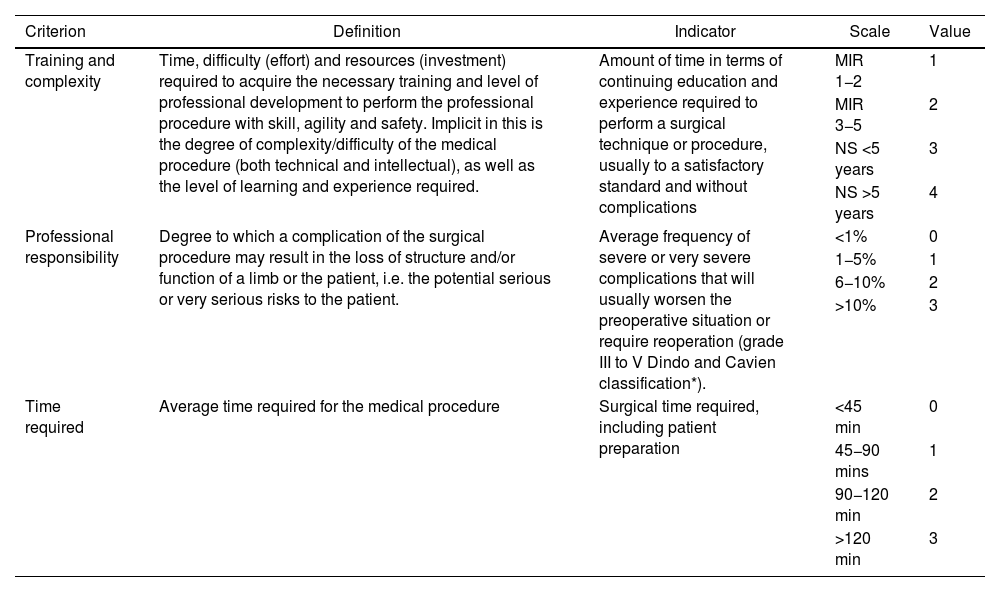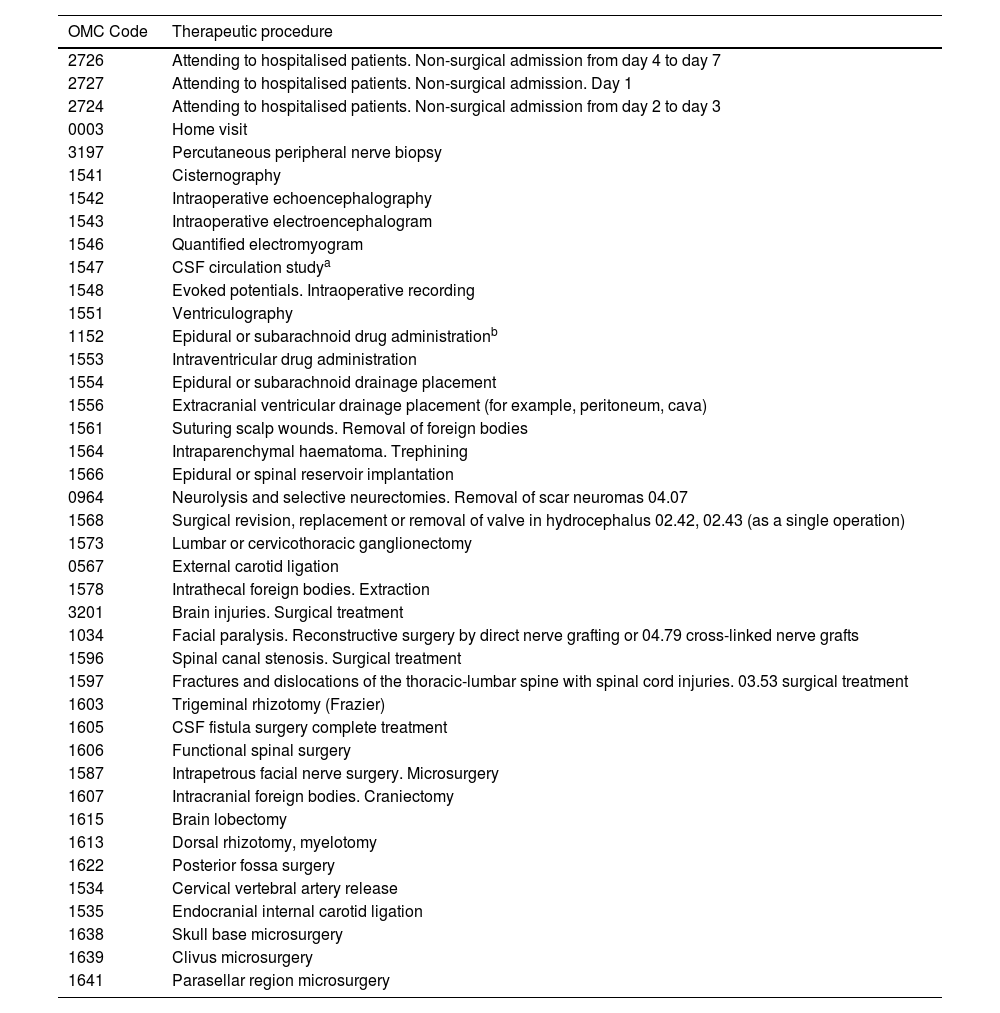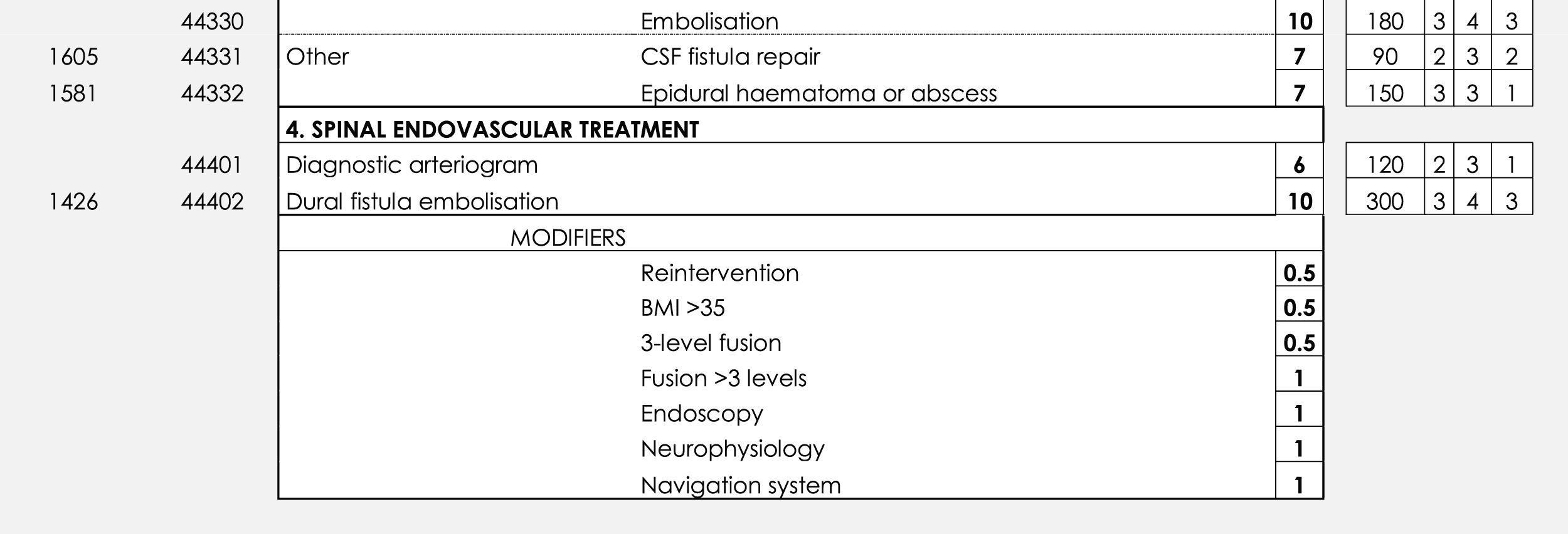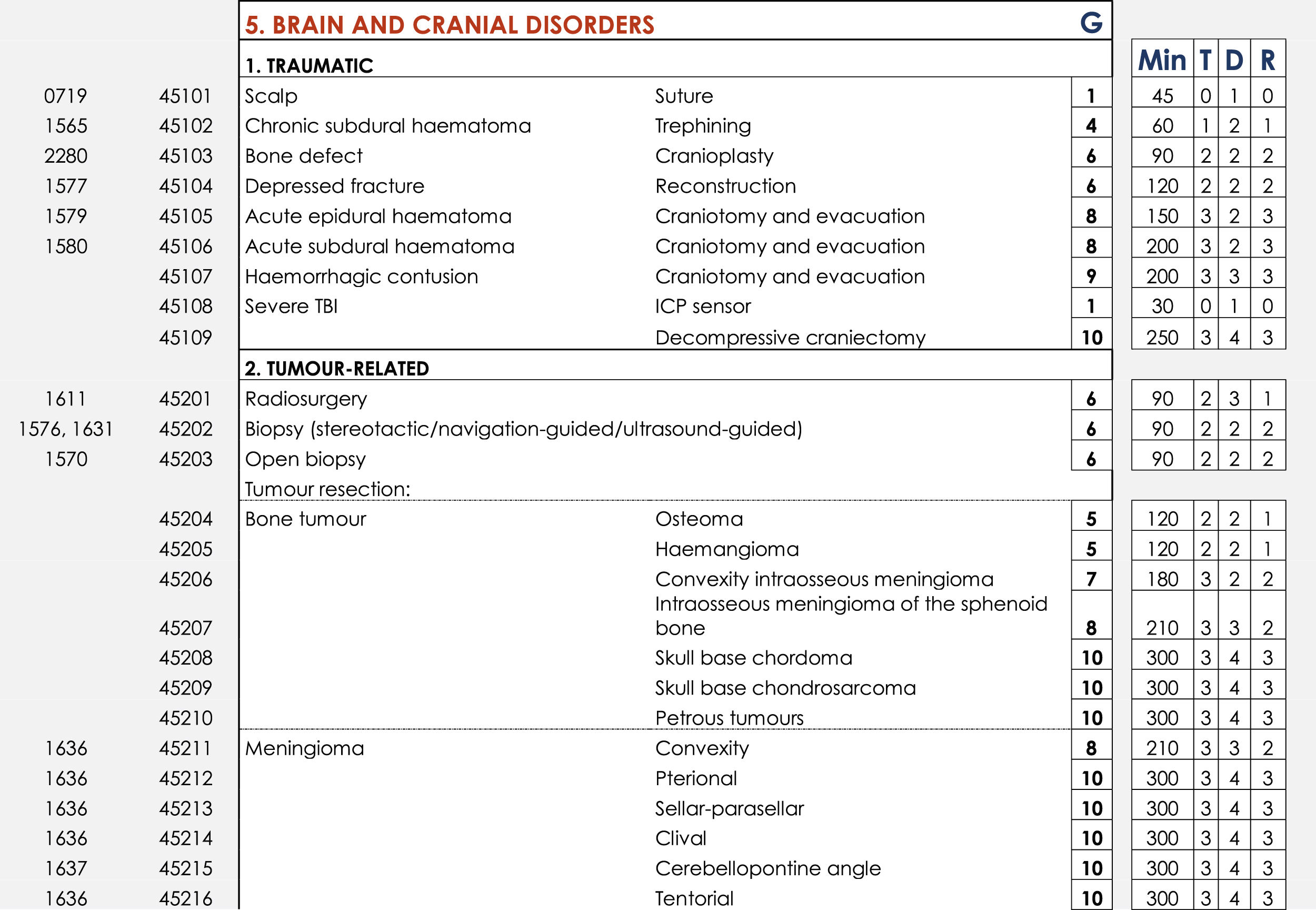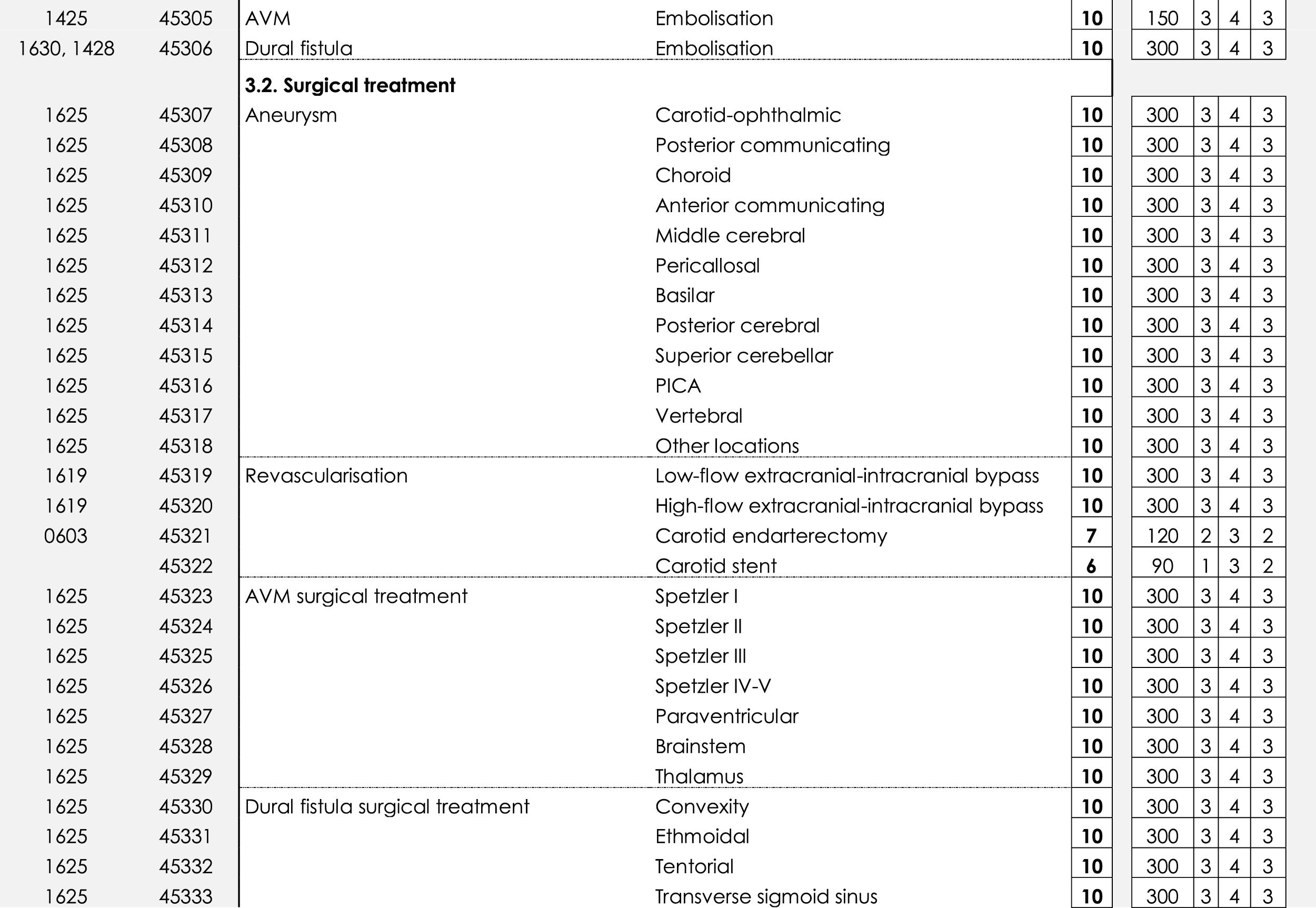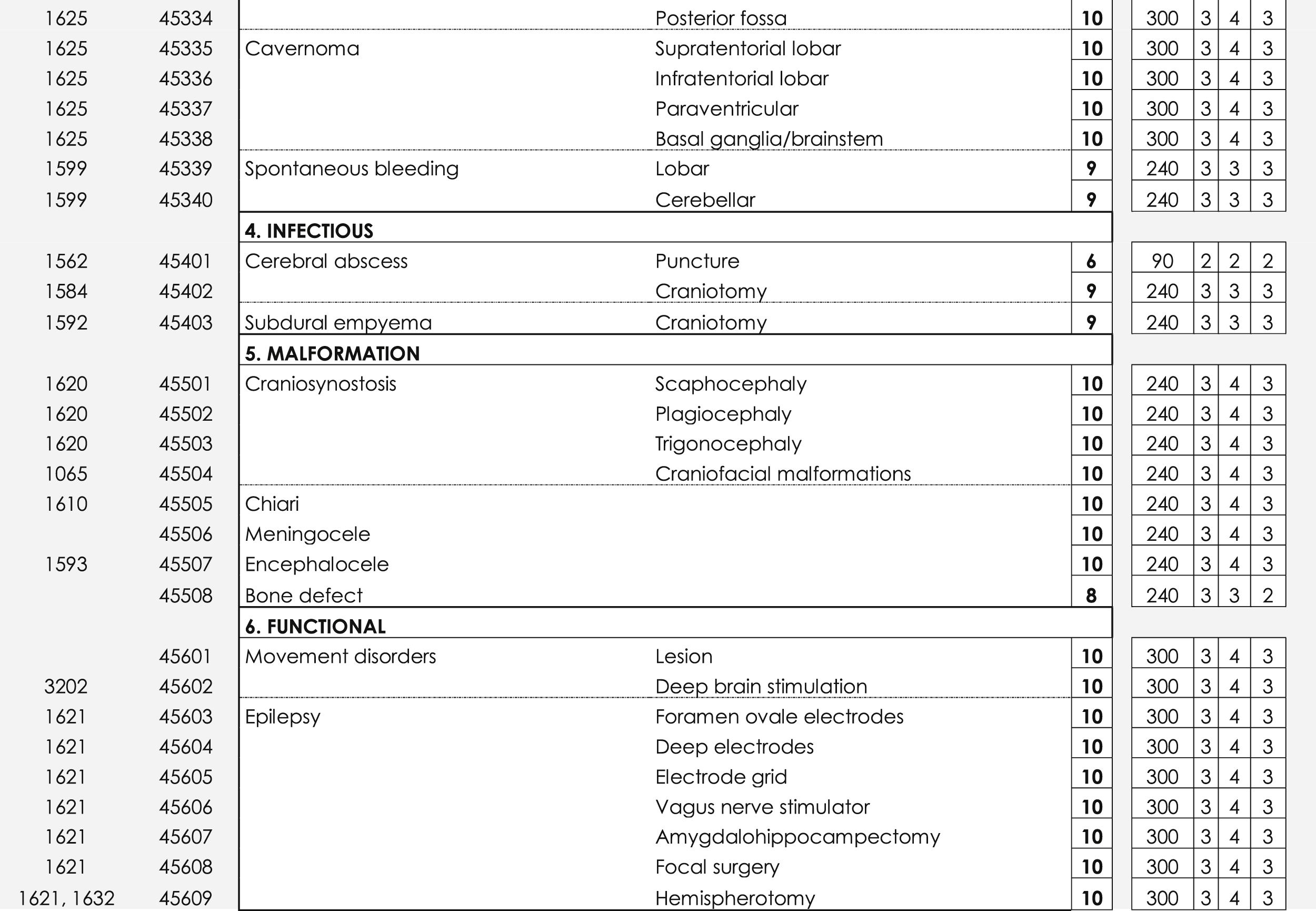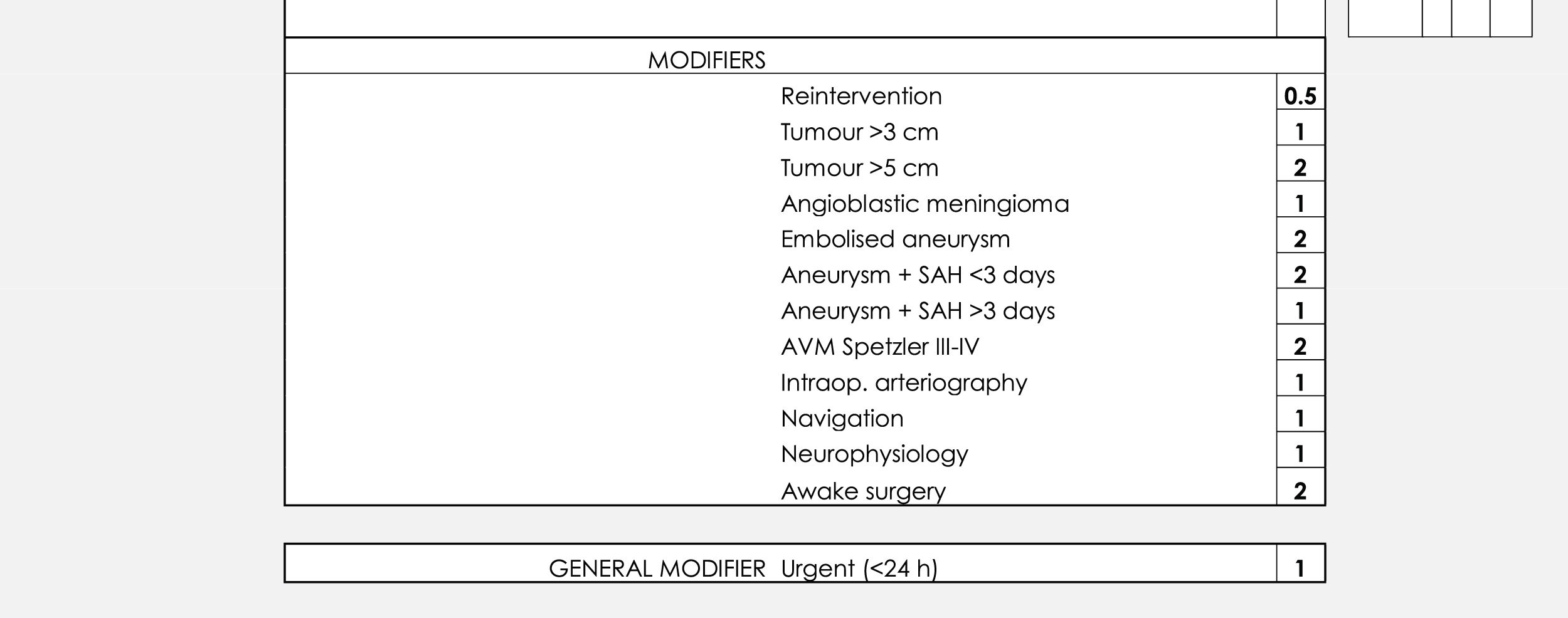Update the list of medical acts in the specialty of Neurosurgery, eliminating obsolete acts and adding the new surgical techniques developed in recent years, so that they are faithfully adapted to the usual medical practice of our specialty, as well as establishing the general principles and defining the grading criteria, quantitative indicators and assessment scales.
MethodsThe elaboration of the new nomenclator was divided into 3 phases: 1) identification and selection of medical acts, 2) establishment of the degree of difficulty of each of them based on the experience and the time necessary for their completion, as well as the percentage and severity of the possible complications and 3) consensus with the members of the SENEC through their individualized submission, making the necessary adjustments and subsequent approval in the general assembly of SENEC.
ResultsThe new nomenclator has 255 medical acts grouped into 4 groups: consultations and visits, therapeutic acts, diagnostic procedures and surgical interventions. 42 procedures included in the OMC nomenclator have been eliminated due to being obsolete, not related to the specialty or being too vague. New techniques have been included and medical acts have been more precisely defined.
ConclusionsThis nomenclator provides up-to-date terminology and will serve to offer the portfolio of services, measure and know the relative value of our activity and the approximate costs of the procedures, and additionally, to carry out longitudinal comparative studies. It should be a tool to improve patient care and minimise geographic variability in all healthcare settings.
Actualizar el nomenclátor de actos médicos de la especialidad de Neurocirugía, eliminando actos en desuso y añadiendo las nuevas técnicas quirúrgicas desarrolladas en los últimos años, para que se adapte fielmente a la práctica médica habitual de nuestra especialidad así como establecer los principios generales y definir los criterios de baremación, indicadores cuantitativos y escalas de valoración.
Material y métodoLa elaboración del nuevo nomenclátor se dividió en 3 fases: 1) identificación y selección de los actos médicos, 2) establecimiento del grado de dificultad de cada uno de ellos basado en la experiencia y el tiempo necesarios para su realización, así como el porcentaje y gravedad de las posibles complicaciones y 3) consenso con los miembros de la SENEC mediante su envío individualizado, realizando los retoques necesarios y posterior aprobación en asamblea de la especialidad.
ResultadosEl nuevo nomenclátor cuenta con 255 actos médicos agrupados en 4 grupos: consultas y visitas, actos terapéuticos, procedimientos diagnósticos e intervenciones quirúrgicas. Se han eliminado 42 procedimientos recogidos en el nomenclátor de la OMC por obsoletos, no ser propios de la especialidad o resultar demasiado vagos. Se han introducido nuevas técnicas y se han definido de forma más precisa los actos médicos.
ConclusionesEste nomenclátor proporciona una terminología actualizada y servirá para ofertar la cartera de servicios, medir y conocer el valor relativo de nuestra actividad y de los costes aproximados de los procedimientos, y adicionalmente, para realizar estudios comparativos longitudinales. Debe constituir una herramienta para mejorar la atención de los pacientes y minimizar la variabilidad geográfica en todos los ámbitos asistenciales.
Article

If it is the first time you have accessed you can obtain your credentials by contacting Elsevier Spain in suscripciones@elsevier.com or by calling our Customer Service at902 88 87 40 if you are calling from Spain or at +34 932 418 800 (from 9 to 18h., GMT + 1) if you are calling outside of Spain.
If you already have your login data, please click here .
If you have forgotten your password you can you can recover it by clicking here and selecting the option ¿I have forgotten my password¿.



